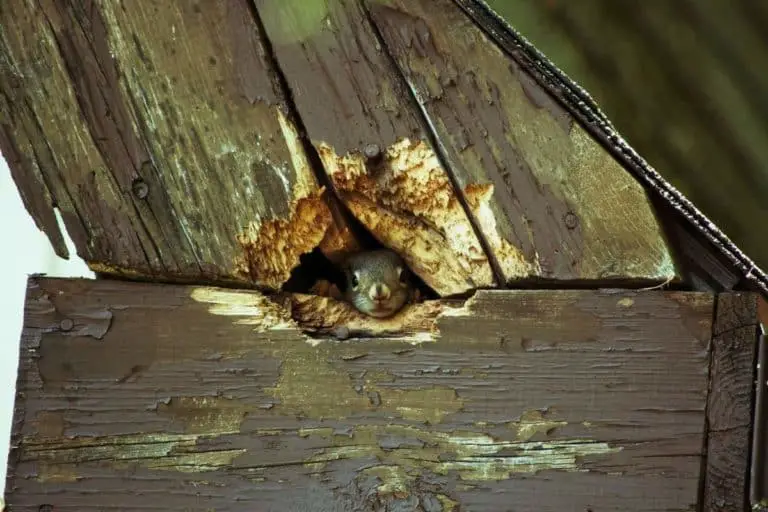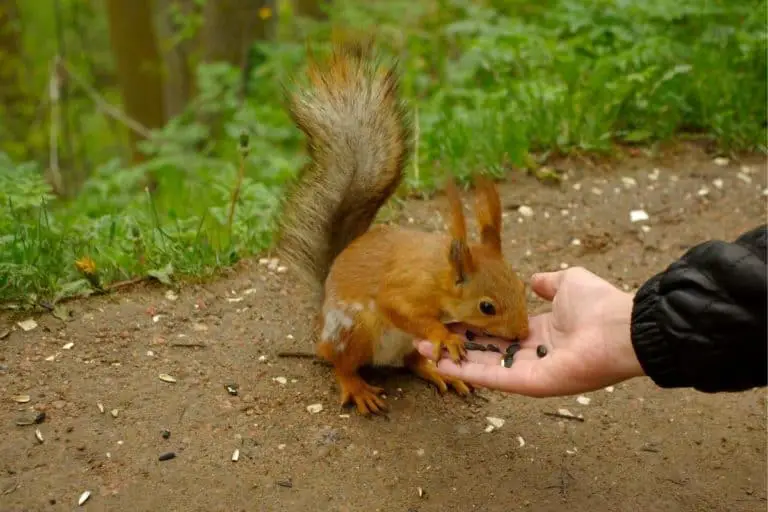Are Squirrels Aggressive to Humans?
Have you ever wondered if squirrels are aggressive towards humans?
In this article, we will delve into the signs of aggression in these furry creatures and the factors that contribute to their aggressive behavior.
You will also learn how to stay safe when encountering aggressive squirrels and get valuable tips on preventing their aggression.
By understanding the behavior of squirrels towards humans, you can better navigate your interactions with these fascinating creatures.
Let’s explore the world of squirrel aggression together.
Key Takeaways
- Squirrels can display signs of aggression towards humans, such as chattering loudly, flicking their tail rapidly, baring their teeth, raising their fur on their back, and glaring at humans.
- Factors that contribute to squirrel aggression include territorial behavior, maternal instincts, communication signals, the urban environment, and scarcity of food.
- To stay safe around aggressive squirrels, it is important to understand squirrel behavior, respond calmly and appropriately, avoid sudden movements, back away slowly, and maintain a safe distance.
- Preventing squirrel aggression can be achieved by maintaining distance, providing alternative food sources, creating a squirrel-friendly environment, planting squirrel-friendly trees and shrubs, and providing nesting boxes or shelters.
Signs of Aggression in Squirrels
If a squirrel starts chattering loudly and flicking its tail, it’s a sign that they’re feeling aggressive towards you. Squirrel body language and vocalizations play a crucial role in understanding their behavior.
When a squirrel feels threatened or territorial, it will display certain behaviors to communicate its aggression. One of the most common signs is tail flicking, where the squirrel rapidly moves its tail back and forth. This behavior is often accompanied by loud chattering noises.
The tail flicking serves as a warning to potential threats, while the chattering vocalizations help to intimidate and ward off intruders. It is important to note that these aggressive behaviors are defensive in nature and are meant to establish boundaries rather than initiate physical attacks.
Factors That Contribute to Squirrel Aggression
You should be aware of the factors that contribute to squirrel aggression. Understanding these factors can help you better navigate interactions with squirrels and reduce the risk of aggression.
Here are three key factors that influence squirrel aggression:
- Territory: Squirrels are highly territorial animals. They become aggressive when they perceive a threat to their territory, such as intruding humans or other animals. It’s important to respect their space and avoid entering their territory unnecessarily.
- Maternal Instincts: Female squirrels can become aggressive when protecting their young. If you come across a nest with baby squirrels, it’s best to keep your distance and avoid any actions that may be perceived as a threat.
- Communication: Squirrels communicate through vocalizations, body language, and scent marking. Misunderstanding their communication signals can lead to aggression. It’s essential to observe their behavior and respond accordingly to avoid escalating the situation.
How to Stay Safe Around Aggressive Squirrels
To stay safe around aggressive squirrels, it’s important to understand their behavior and know how to respond appropriately.
Squirrel behavior is influenced by various factors such as their natural instincts, territoriality, and the presence of perceived threats. Squirrels communicate using a combination of vocalizations, body language, and scent marking.
When squirrels feel threatened or cornered, they may exhibit aggressive behavior as a means of self-defense. It’s crucial to remain calm and avoid sudden movements when encountering an aggressive squirrel. Backing away slowly and giving the squirrel an escape route can help de-escalate the situation. It’s also advisable to avoid direct eye contact and to keep a safe distance.
Understanding squirrel behavior and communication can help you stay safe and prevent potential confrontations with these small but feisty creatures.
Tips for Preventing Squirrel Aggression
One way to prevent squirrel aggression is by understanding their behavior and providing them with alternative food sources. Squirrels are naturally curious and territorial creatures, and aggression towards humans can occur when they feel threatened or when they perceive humans as a source of food scarcity.
To effectively deal with aggressive squirrels, consider the following tips:
- Maintain distance: Avoid getting too close to squirrels, as this can trigger defensive behavior. Keep a safe distance to reduce the likelihood of aggression.
- Provide alternative food sources: To prevent squirrels from raiding your bird feeders or gardens, offer them their own food sources such as squirrel feeders filled with nuts or seeds. This helps alleviate competition for resources.
- Create a squirrel-friendly environment: Plant squirrel-friendly trees and shrubs, and provide them with nesting boxes or shelters. By offering them a suitable habitat, you can help reduce their aggression towards humans.
Understanding the Behavior of Squirrels Towards Humans
Understanding the behavior of squirrels towards humans can help in preventing potential conflicts. Squirrels use various communication methods to interact with their environment and other animals, including humans. They communicate through vocalizations, such as chattering and barking, as well as through body language, such as tail flicking and posturing. These behaviors can provide valuable insights into their intentions and level of comfort.
Additionally, understanding their habitats and diet preferences can also help in avoiding conflicts. Squirrels typically inhabit trees and build nests known as dreys. They are omnivorous animals, consuming a wide range of foods, including nuts, seeds, fruits, and insects. By respecting their natural habitats and providing suitable food sources, we can minimize potential human-squirrel conflicts and foster peaceful coexistence.
Frequently Asked Questions
Are There Any Specific Breeds or Species of Squirrels That Are More Aggressive Towards Humans?
There are specific breeds or species of squirrels that can exhibit aggressive behavior towards humans. Understanding the reasons behind this aggression, such as territoriality or feeling threatened, can help prevent negative interactions.
Can Aggressive Squirrel Behavior Be Influenced by the Time of Year or Their Reproductive Cycle?
During different seasons or reproductive cycles, squirrels may exhibit varying levels of aggression towards humans. Understanding the factors that contribute to this behavior can provide insight into how these animals are influenced by their environment.
Are There Any Certain Actions or Behaviors That Are More Likely to Trigger Aggression in Squirrels?
Certain actions or behaviors can trigger aggression in squirrels. Understanding these triggers is important for avoiding confrontations. Factors such as territoriality, fear, and feeling threatened can all contribute to aggressive behavior in squirrels.
How Common Are Squirrel Attacks on Humans and What Are the Typical Injuries?
Squirrel attacks on humans and the severity of injuries vary. The frequency of attacks is relatively rare, and injuries are typically minor, such as scratches or bites. However, each incident should be taken seriously and reported.
Are There Any Known Methods to Calm Down or Deter an Aggressive Squirrel?
To calm down or deter an aggressive squirrel, you can try various methods. Effective deterrents include making loud noises or spraying water. Calming techniques involve creating a peaceful environment and offering food as a distraction.
Conclusion
In conclusion, it’s clear that squirrels can display aggressive behavior towards humans. Despite their seemingly innocent and adorable appearance, these furry creatures can pose a threat if provoked or threatened.
Understanding the signs of aggression and taking necessary precautions is crucial for staying safe in squirrel-populated areas.
Remember, while squirrels may seem harmless, their aggression is a reminder that nature can have unexpected surprises. So next time you encounter a squirrel, be cautious and respectful, as you never know when their cute demeanor can turn into a fierce display of power.
Stay vigilant, folks!






